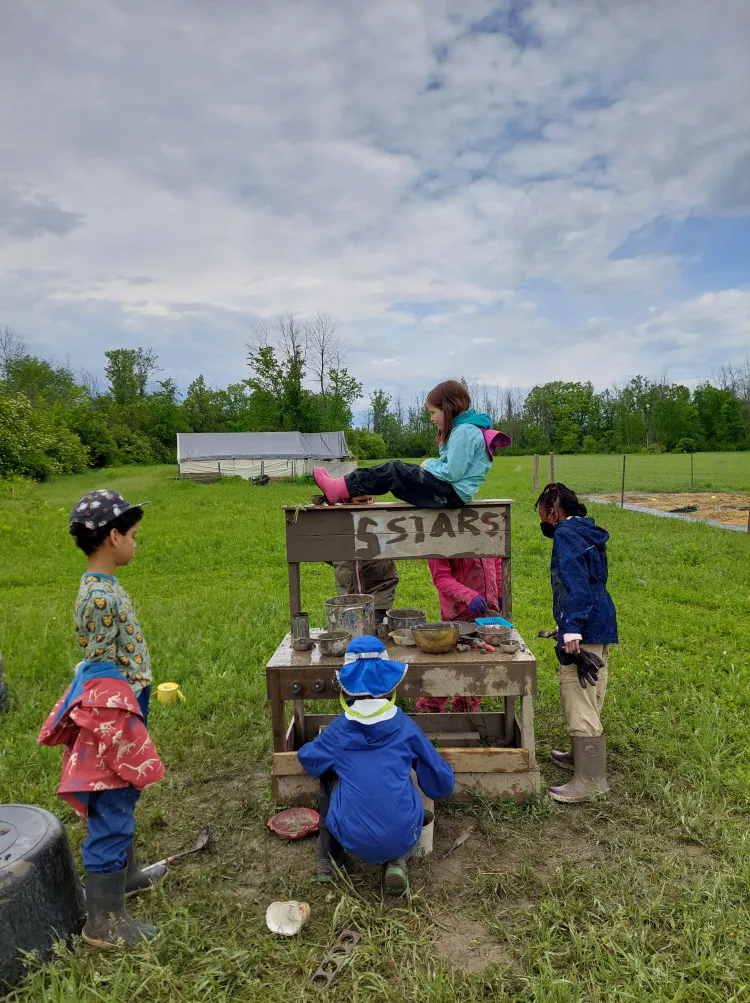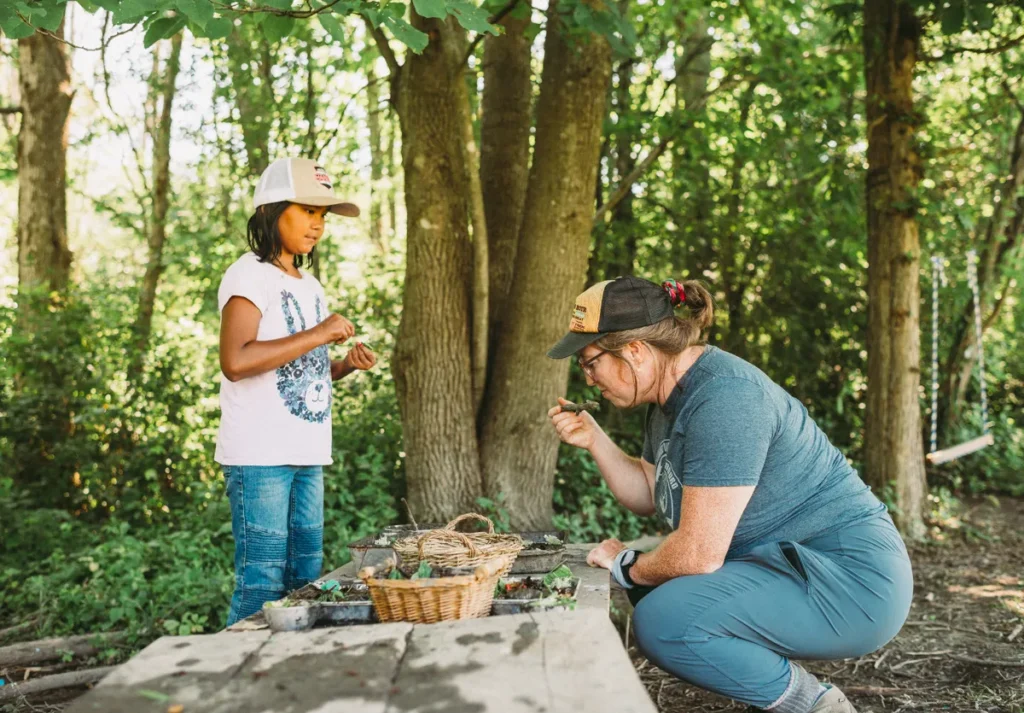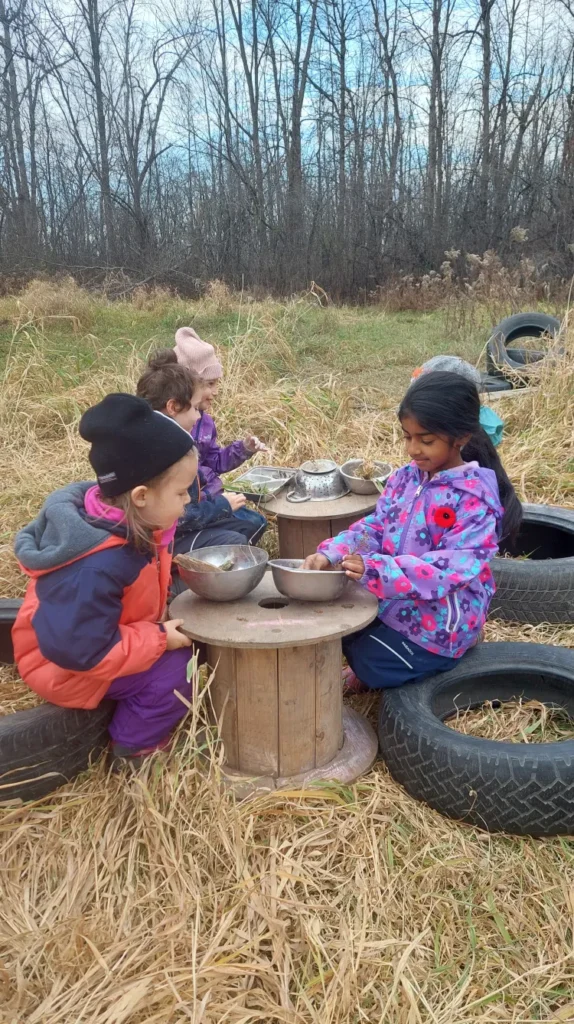
Everywhere we go, in the real world and in play, food is essential to how we connect with others. At forest school, it’s no different. There are many facets where food and learning and inquiry intersect throughout our days in very real ways—we gather intentionally together around the fire to lunch and snack; we have an evolving garden; and we cook apples, popcorn and warm drinks over the fire as frequently as we can. However this post will focus on the ways in which pretend or imaginary food facilitates connections and learning between students and the land.
The mud kitchen and associated imaginary food play provide so many different entry points for students of different ages and inclinations to play and work alongside each other. It is often where students start their morning at a slower pace—after drop-off they head over to the pots and pans and begin going through familiar culinary motions. They are slowly joined by other children who may begin by silently stirring a pot at the next burner, and before long they’re collaborating on a cake together and wondering who they should share it with.


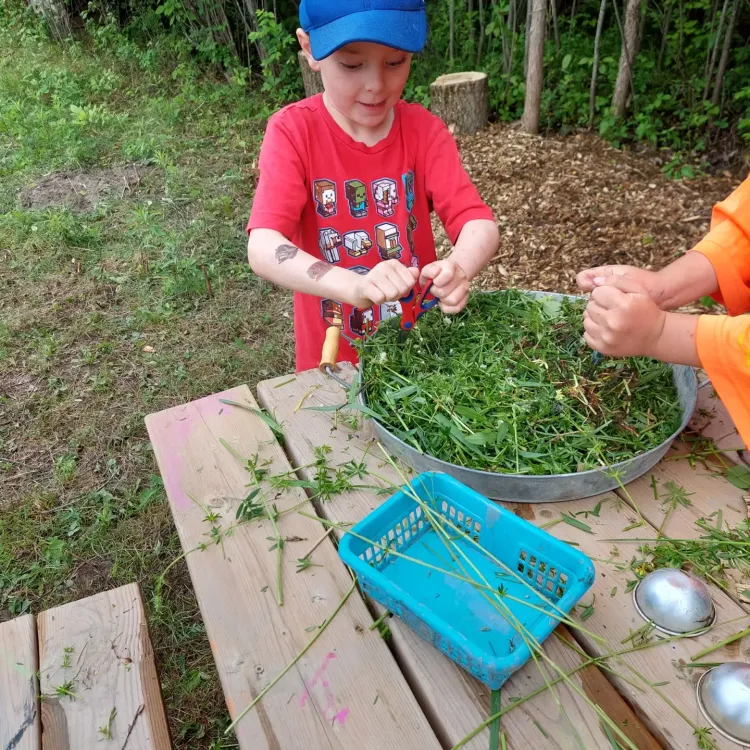
And there is such an evident joy in the sharing of the food they make! Sometimes food is prepared to be shared within families or communities of humans or animals. Other times, it’s prepared at a commercial scale in sit-down restaurants, small take-out venues or apparent ghost kitchens that serve everything imaginable and have a delivery radius that stretches from the Wolf tent to the firepit. There are some establishments where one student does everything from cooking to waiting on tables to scribing colourful menus. Other establishments have specialized staff in roles suited to either the needs of the business or the individual’s interests and inclinations.

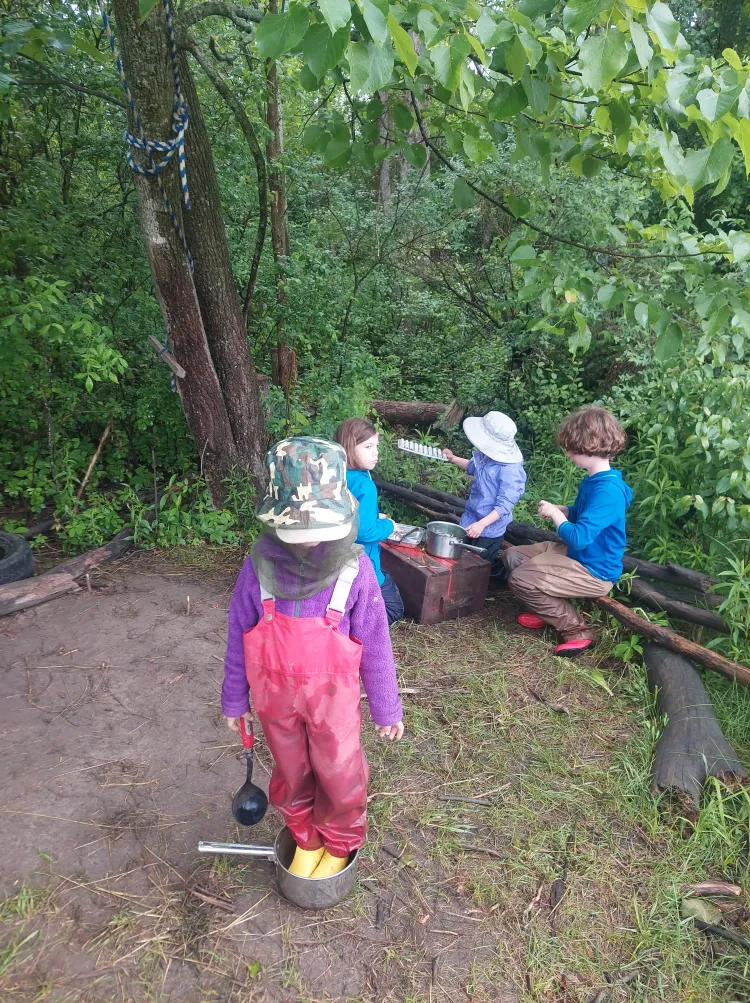

Imaginary food provides real social bridges for students who might be looking for a way to join play. We can encourage a child on the periphery to place an order at a developing restaurant. We can scaffold a connection between children—one who has created something delicious, and others who may be immersed in independent play but who can suspend their own narrative long enough to receive and consume a bowl of soup (dinosaur food, robot food, etc) without breaking character or losing their own momentum. After all, doesn’t everyone have to eat?
It doesn’t have to be prepared food, either–there are many ways to hunt and gather in these fields. There was a day when a student (playing as a fox) wanted to join into play with another group of children playing as kittens. We suggested, don’t foxes and kittens eat the same kind of food? Perhaps you could hunt some mice, bring it to the kittens, and feast together! You can further fine tune the connections to suit the children you’re working with. Maybe that becomes the fox’s role in the game—running around expending a lot of energy hunting, returning occasionally to briefly connect and converse with the grateful kittens, who are content to play mostly within whatever den they have created for themselves. And yet the connection is there and it is real.

Another day, students were seated on tires around a plank table that stretched to hold an apparent dinner party of four and five year olds. The table was set, but the bowls and plates were mostly empty. Nonetheless, the children were happily miming eating their invisible food. Then, the plot thickened like a good dandelion stew: one student had broken up a piece of bark that he called bread, and was trying and trying to get the attention of the others so that he could share it with them. The party was humming and he had a hard time being noticed, but finally he was able to make eye contact and communicate to another child that he wanted to share the bread. Then another student noticed, and they too accepted a piece of bread. And then just when I couldn’t imagine a richer or more beautiful scene of learning and connecting playing out in front of my educator eyes, a chef came BURSTING onto the scene– nearly breathless after sprinting from the mud kitchen, he was carrying a big pot and he couldn’t wait to share the spaghetti he had prepared. He filled everyone’s bowls, with grass as he explained the recipe, and it added another layer to the social element of the play, as well as a new loose part to interact with.

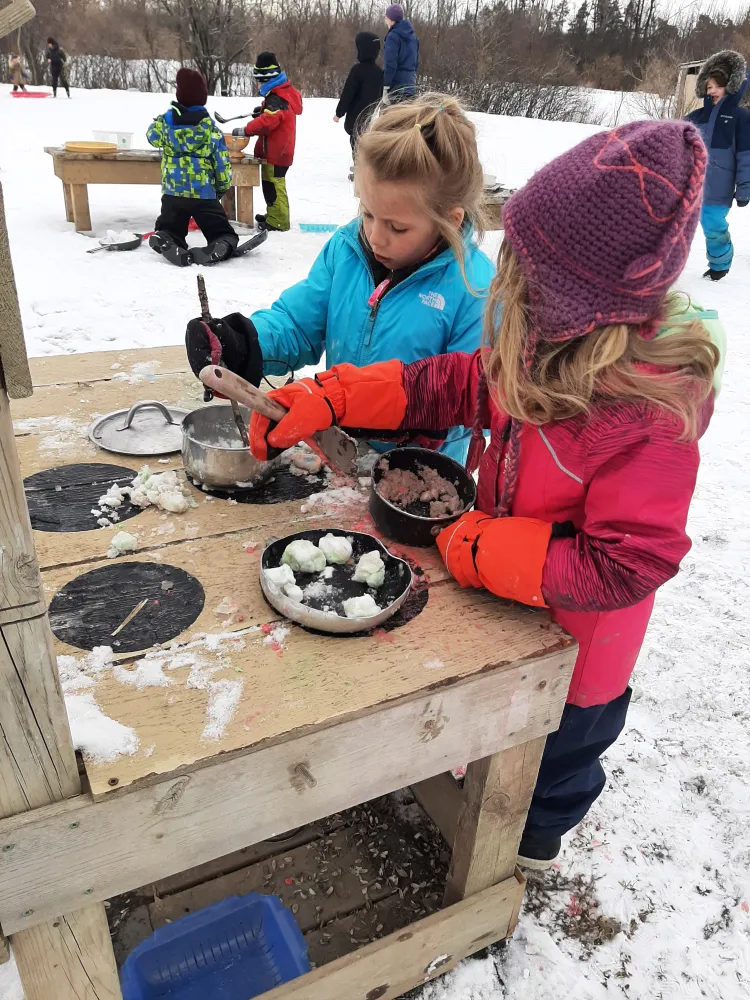
Yes, there is value in passing someone an empty bowl of imaginary food. But when that bowl is filled with actual grass-based spaghetti lovingly prepared on-site by a friend…the magic and connection grows.
